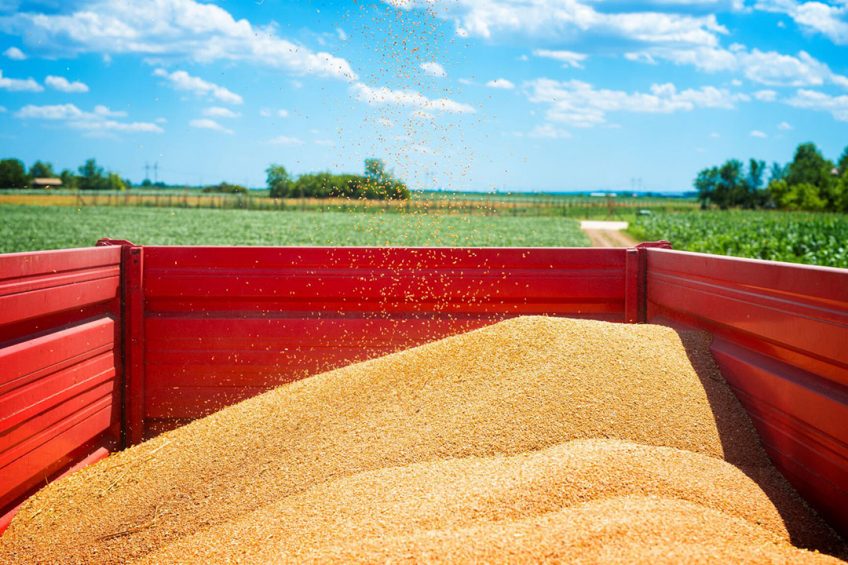Case study: Livestock feed demand in Australia declines

The healthy production year for Australian grains forecast for MY 2021/22 comes after a strong drought-recovery year in MY 2020/21. However, livestock feed demand in the country has declined since the rains began in early 2020.
A robust wheat area
Australia’s MY 2021/22 wheat production is forecast at 27 mmt, a 6.3 mmt decrease from the record-breaking MY 2020/21 crop of 33.3 mmt. This would still be 11% higher than the previous 10-year average of wheat production in the country.
Robust wheat area in MY 2021/22 is expected to be supported by the high world wheat prices – which have boosted farmer returns as evidenced by a skyrocketing of tractor and agricultural machinery sales to farmers this past year – as well as caution around Chinese import duties (of 80.5%) on Australian barley resulting in some area shift to wheat.
Changes in livestock feed consumption
Changes in livestock feed consumption is the primary driver of overall wheat consumption in Australia, which is forecast in MY 2021/22 at 7.5 mmt. Feed demand of wheat spiked during the drought in 2018 and 2019 in the eastern states, peaking at 5.7 mmt as a result of strong demand from livestock industries. Demand has since declined to more typical pre-drought levels of around 4 mmt.
Impact of drought on grains for on-farm livestock feeding
The recent drought had a major impact on pasture production, which led to strong demand from beef cattle and dairy producers, primarily, for grains for on-farm livestock feeding. The drought also had a major impact on the number of beef cattle being finished through feedlots and therefore increasing feed demand from this sector.
Demand for on-farm grain feeding falls with rains in early 2020
Since the rains in early 2020, pasture production conditions have significantly improved to well above average in many areas, leading to a significant reduction in demand for on-farm grain feeding and a reduction in cattle numbers being finished off in feedlots, therefore also reducing their grain feed requirements.
Grain consumption in poultry and pork sectors – stable
The poultry and pork sectors are also significant consumers of wheat and other grains. However, the meat production of these sectors and their consumption of grains have remained relatively stable.
Fewer hectares yield less barley
Australia’s MY 2021/22 barley production is forecast at 10 mmt. This crop was the second highest on record after 13.5 mmt in 2016/17.
A reduction in production is in part due to a forecast decrease in area (4.4 million ha to 4 million ha), which is due to sentiment in the major barley exporting states of Western Australia and South Australia associated with China’s duty on imports from 18 May 2020 for a period of 5 years.
Barley takes an increased share of domestic feed rations
MY 2021/22 barley consumption is forecast at 5.5 mmt. Domestic consumption for malting purposes is relatively stable with livestock feed consumption being the primary variation in consumption from year to year.
Although overall grain feeding of livestock in Australia is forecast to be similar to MY 2020/21, barley consumption is expected to remain at levels double that of the 5-year pre-drought average of 2 mmt. Barley has taken an increased share of domestic feed rations at the expense of wheat and sorghum. After a big production season of wheat and barley in MY 2020/21, the price spread between wheat and barley is settling back to typical levels of around AU$50 (US$38.81) per mt and the price of sorghum remains higher than barley and wheat. This is expected to support stronger than historical feed barley consumption.
Sorghum primarily a livestock feed grain
The MY 2020/21 sorghum production estimate is 1.5 mmt, similar to the MY 2021/22 forecast of 1.4 mmt, which is slightly below the 10-year average.
Sorghum is primarily a livestock feed grain and competes with feed wheat and barley. An advantage of sorghum is that it is produced in key livestock producing and feedlot regions. It is considered by the livestock industry as a nutritionally inferior grain to barley and wheat. Many beef feedlots, particularly, have adapted by introducing a steam flaking process prior to adding it to a mixed ration for cattle. This improves the digestibility of grains and increases the proportion of rumen bypass protein, significantly improving its value.
Sorghum price increase
Domestically, sorghum has recently increased its price premium over wheat and barley, partly due to the current bigger crop not yet having a major impact on its price, as well as because of export demand.
Declining sorghum production trend
Over time feedlot facilities with steam flaking infrastructure are moving away from sorghum due to the higher nutritional value of other cereal grains which can increase the energy density of their rations. This factor is contributing to a declining sorghum production trend over the last 20 years.
Sorghum prices expected to become more crop size and export demand
The current high sorghum price will encourage growers to plan for a bigger crop in MY 2021/22. However, with a declining preference for sorghum from the livestock feed industry and the mothballing of the bio-ethanol plant in southern Queensland, which previously consumed around 150,000 mt of sorghum per annum, sorghum prices will become more sensitive to the size of the crop and export demand. It is becoming less likely that production of in excess of 2 mmt will occur in the future unless new export markets are established.
This information was extracted from a USDA GAINS report.











